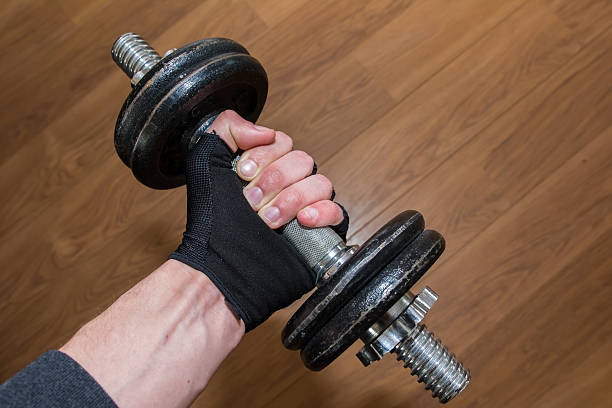
Deadlifting is picking up a heavy weight from the ground while standing straight. It’s a great exercise for strengthening your legs, back, and core. Let’s dive into the different types of grips and why hook grip is better.
Understanding the Basics:
We first need to know what a hook grip and a normal grip are. A normal grip is when you wrap your fingers over the bar with your thumbs next to your fingers. It’s the same way you would hold onto a barbell for other types of exercises like bench press or shoulder press. A hook grip is when you wrap your fingers over the top of your thumb, which is also wrapped around the bar.
The grip is essential when it comes to deadlifting. If you can’t hold onto the bar, you won’t be able to lift the weight. Grip strength also affects your form – if you’re struggling to hold onto the bar, your back and shoulders might do too much of the work, and you could hurt yourself.
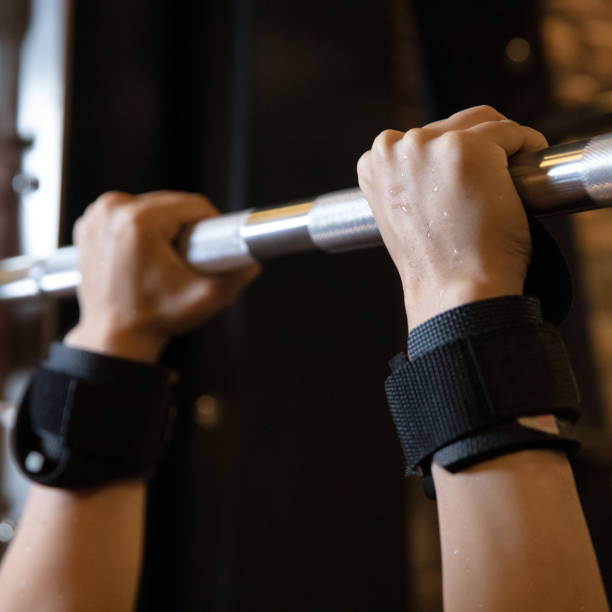
Which is Better for Deadlifts?
Now for the science part! Let’s talk about the biomechanics of a hook grip compared to and mixed grip (when you have one hand in a normal grip and one hand in a reverse grip, with your palm facing away from your body). Studies have shown that hook grip is more effective at increasing grip strength, specifically for deadlifting. A mixed grip can be helpful for heavier weights, but it can also put uneven pressure on your spine and contribute to muscle imbalances if you always use the exact grip.
Using a hook grip for deadlifting can also help prevent injury. If you’re using a normal grip and the bar starts to roll out of your fingers, you might hold onto it with your fingertips or compensate by hunching over. This can strain your back and neck. With a hook grip, the bar is less likely to roll out of your hands, and you can stay in a neutral spine position.
Preventing Bar Roll
Let’s talk more about bar roll and why it’s important. Because the barbell is round, keeping it stable in your hands as you lift heavier weights can be difficult. Bar roll can cause you to lose grip or shift your weight unevenly. With a hook grip, your fingers and thumb create a “lock” around the bar, making it harder for it to roll out of your hands. This means you can lift heavier weights with more control and less risk of injury.
Technique, Benefits, and Drawbacks:
Now that we’ve covered the basics of hook grip let’s talk about how to do it properly. Start with your hands in a normal grip position to use a hook grip. As you wrap your fingers around the bar, place your thumbs on top and press them into the bar. Your middle fingers now should be in contact with your thumbnail. It might initially feel uncomfortable, but with practice, it will become easier and more effective.
Some benefits of using a hook grip include better grip strength, decreased risk of injury, and improved overall deadlift technique. However, it’s important to note that hook grip can be painful for some people, especially as they’re first getting used to it. You might also find it harder to release the bar quickly if you need to lose weight in an emergency. But don’t worry – with practice; you’ll learn to release the hook grip offers as quickly as with a normal grip.
Reasons to Choose the Hook Grip While Deadlifting: Improved Performance and Safety
Let’s look at the benefits of the hook grip when it comes to deadlifting. They are:
Enhanced Lifting Power and Stability
Using the hook grip, your fingertips are positioned between the bar and your closed palm. This may be uncomfortable initially, but it will allow you to grip the bar more securely. With the bar wedged between your palm and fingertips, you can exert more force and pull more weight off the ground. This helps you maintain excellent stability and control during the lift.
Reduced Risk of Injury
When it comes to doing any exercise, safety is always an essential factor to consider. With the hook grip, your fingers act as a barrier that prevents the bar from slipping out of your hands. This reduces the risk of injury in two ways:
1) You can avoid dropping the barbell and potentially hurting yourself or others, and
2) It reduces the strain on your biceps tendons, a common injury when using the mixed grip.
Analyzing the Safety Factor: Is Deadlifting with a Hook Grip Safe?
Now, let’s talk about safety and whether using the hook grip when deadlifting is safe. Here are the key points to consider:
Common Concerns about Hook Grip Safety
Many people are concerned about the hook grip’s impact on their hands, fingers, wrists and elbows. This is because the grip is quite intense and may take some time to get used to. It is also important to note that using the hook grip with heavy weights can be challenging. As such, there is a risk of injuries due to the compressed nerves in your fingers when your grip is too tight.
Addressing Safety Concerns and Best Practices
To address these concerns, proper form is important. You need to ensure that your grip is secure but tight enough. Pay attention to how your fingers feel and adjust accordingly. Warming up your hook grip creates the mechanism can also help to prepare your hands and wrists for the lift. Additionally, you must learn the correct technique for the hook grip and seek advice from a qualified coach or trainer.

Weightlifting Hook Grip: Mechanism 1 – How it Works and Why it Matters
Now, let’s take a look at how the hook grip works and why it matters. Here are the key points:
The Underlying Mechanics of Hook Grip
The hook grip occurs by wrapping your thumb around the barbell first before wrapping your remaining fingers around the barbell and your thumb. This creates a “hook” shape between your thumb and your fingers and tightly secures the barbell in your grip. By doing this, you can reduce the weight of the barbell on your tendons, which can often lead to higher performance and safer exercise.
Benefits of Mechanism 1 in Weightlifting
The benefits of using the hook grip are numerous. It is an effective way to increase grip strength, protect your tendons from injury, and improve the overall quality of your lift. This can help you lift heavier loads, increase your reps and work harder for longer without experiencing extreme fatigue or discomfort. Mechanism 1 also provides more stability and control during the lift, allowing you to focus on your form and technique.
Comparing Hook Grip and Mixed Grip: Use Cases and Best Practices
Finally, distinguishing the hook grip from the mixed grip and when to use it is important. Here are the key points:
When to Use Hook Grip
The front hook grip technique is generally best for high-rep sets and exercises that require more grip strength, such as deadlifts, pull-ups, and barbell rows. It’s also an effective grip technique for individuals who have injured their biceps tendons, preventing extra strain on these muscles.
When to Use Mixed Grip
The mixed grip is often preferred in certain situations, such as with heavier deadlifts, as it may be difficult to maintain the grip through the full range of motion. The mixed grip is also helpful for those with a weaker grip because it allows for more stability and the opportunity to use heavier loads during lifting.
Pros and Cons of the Hook Grip While Deadlifting: Making an Informed Decision
When it comes to deadlifting, you can use two main types of grips: the normal grip and the hook grip. The normal grip is where your fingers wrap around the bar, and your thumb is on the same side as your fingers. The hook grip is where your thumb goes under your fingers and grips the bar.
Advantages of Hook Grip Deadlifting
One advantage of using the hook grip is that it provides a stronger grip on the bar. This is because having your thumb under your index and middle fingers together gives you a “double overhand” grip, which can be more secure than the normal grip. You’ll be less likely to drop the bar during heavy lifts.
Another advantage is that the hook grip can help your lift’s smoothness. When you use a normal grip, there can be some movement in the bar between your fingers and the palm of your hand. The hook grip mitigates this, making your life feel more stable and secure.
Disadvantages and Potential Issues
One potential issue with the hook grip is that it can take some time to get used to. This means it might feel uncomfortable initially, and it can be easy to give up on it early on. Additionally, as you adjust to the new grip, you may experience some initial soreness or bruising on your thumb and fingers.
Another disadvantage is that the grip being so secure can make it difficult to let go of the bar. This can be a problem for specific lifts, such as heavy cleans, where you need to release the bar quickly to catch it in a front squat.
Promoting Better Bar Control with the Hook Grip: Tips and Techniques
If you decide to use the hook grip, you can use some tips and techniques to help improve your bar control.
Proper Hand Placement and Pressure Distribution
Firstly, make sure that your thumb is in the right position. Your thumb should be flush against the bar, with your fingers wrapped around it. This will help prevent your thumb from slipping out during the lift.
Another tip is to distribute pressure evenly across your fingers and thumb. This means you want to avoid putting too much pressure on any finger or part of your middle finger or thumb, which can cause discomfort or pain.
Exercises to Improve Bar Control
To improve your bar control using the hook grip, it’s a good idea to practice with lighter weights first. Start with a comfortable weight and gradually work your way up. Focusing on exercises targeting your grip strength, such as farmer’s walks or grip squeezes, can also help.
Learning the Hook Grip: How Long Does it Take and How to Master It
Timeframe for Learning the Hook Grip
Everyone is different, so there’s yet to be a set timeframe for how long it will take to learn the hook grip. Some people may adjust quickly and comfortably within a few sessions, while others may take longer. Keep going even if it takes you a little longer than expected!
Tips for Accelerating the Learning Process
One tip for accelerating the learning process is frequently practising the hook grip. This means using it for every deadlift workout until it feels natural. Additionally, ensure you’re following the correct hand size, placement and pressure distribution techniques outlined above.
The Importance of Performing the Hook Grip Correctly: Common Mistakes to Avoid
Incorrect Thumb Position and How to Fix It
One common mistake in hook grip execution is having an incorrect thumb position. This can happen when your thumb is not fully underneath your fingers, leaving it more exposed and prone to slipping out. To fix this, make sure to press your thumb flush against the bar and firmly wrap your fingers over it.
Other Common Errors in Hook Grip Execution
Other common errors can include:
- Putting too much pressure on one finger.
- Overextending your thumb.
- Gripping the bar too tightly.
Keep practicing with lighter weights to help correct any issues you may be experiencing.
So there you have it– the ins and outs of hook grip vs normal grip. Remember, if you try out the hook grip, take it slow, practice consistently, and focus on proper hand placement and pressure distribution technique.
Incorrect Thumb Position: How it Can Affect Your Hook Grip Deadlift
When using the hook grip, the position of four fingers over your thumb is crucial. The proper way to do it is to wrap your thumb around the bar and then place your fingers over your thumb. This might feel a little uncomfortable at first, but it’s worth it for the improved grip.
Consequences of Improper Thumb Placement
If your thumb is incorrectly placed, you’re setting yourself up for potential injury. When you’re lifting heavy weights, it’s easy for the bar to slip out of your hands if your grip isn’t secure. This can lead to muscle strain or even dropping the weight on yourself or someone else.
Tips for Correct Thumb Positioning
To make sure you have proper thumb placement, try this exercise:
- Hold up your hands in front of you with your palms facing away.
- Place your left hand over your right hand, with your thumbs touching.
- Wrap your right hand around your left thumb and place your fingers over your left hand.
This is the proper hook grip position.
Mixed Grip Deadlifts: Benefits, Drawbacks, and When to Use Them
Another way to improve your grip during deadlifts is to use the mixed grip. This means one hand is in an overhand grip, and the other is in an underhand grip. There are benefits and drawbacks to using this grip, though.
Advantages of Mixed Grip Deadlifting
When you use the mixed grip, your grip on the bar is much stronger than a normal grip. This helps prevent the bar from slipping out of your hands, even when lifting much heavier weights than you normally could.
Potential Issues with Mixed Grip Deadlifts
There are some downsides to using the mixed grip, though. When you’re lifting heavy weight with different grips on each hand, it can cause your body to twist slightly. This can lead to muscle imbalances over time, especially if you always use the same mixed grip.
Deciding Between Hook Grip and Mixed Grip
So which grip is better? Ultimately, that’s up to you. But most experienced lifters will tell you the hook grip is the way to go. It may take some practice to get used to, but it’s better for your body in the long run.
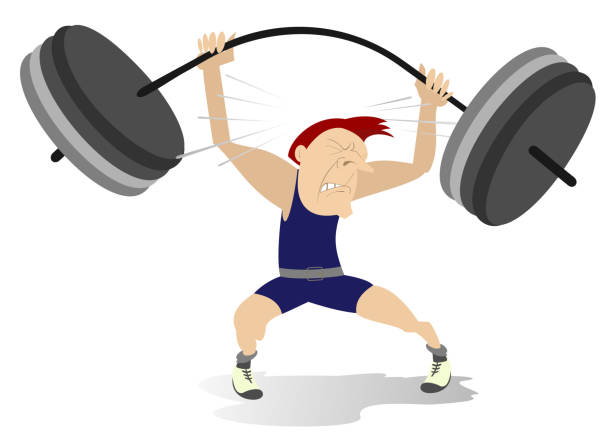
Ignoring Discomfort or Pain: Recognizing Warning Signs and Adjusting Your Hook Grip
When starting with the hook grip, it might feel uncomfortable. But if you’re experiencing pain or discomfort, adjusting your grip is important.
Identifying Signs of Injury or Strain
If you’re feeling pain in your thumbs or fingers, that’s a sign that you might need to modify your grip. It’s also important to pay attention to your grip strength. If you’re having trouble maintaining your grip on the bar, that’s another warning sign.
How to Modify Your Grip for Improved Comfort
To modify your grip, try adjusting the placement of your thumb or using lifting straps to help secure your thumb length the grip. You may also need to reduce the weight you’re lifting while you get used to the hook grip.
Hook Grip Small Hands: How to Adjust Your Grip for Optimal Results
For lifters with smaller hands, the hook grip can be a challenge. But there are techniques you can use to help improve your grip.
Challenges Faced by Lifters with Small Hands
If your hands are smaller, it can be not easy to wrap your index finger and your thumb around the bar and still maintain a secure grip. This can lead to slipping or dropping the weight, which can be dangerous.
Techniques for Adapting the Hook Grip for Smaller Hands
Try wrapping your fingers around your thumb at a slight angle to make the hook grip work for you. You can also try using chalk or grip aids to help improve your grip strength. With practice and persistence, you can make the hook grip work for you, no matter the size of your hands.
Hook Grip Deadlift Training Schedule: Tips for Integrating the Grip into Your Routine
Frequency and Progression of Hook Grip Training
If you’re new to the hook grip, you want to use it only for some of your lifts. You should start by incorporating it slowly, using it for just a few sets or reps during your strength training only sessions. Over time, you can gradually increase the amount of hook grip training you do.
Balancing Hook Grip Deadlifts with Other Exercises
While using the hook grip can be helpful for deadlifts, you want to rely on it sparingly. Balancing your hook grip deadlift training with other exercises that don’t use the hook grip is important. This can help you avoid overusing your fingers, which can be really uncomfortable.
Differences in Grip Types for Various Strength Exercises: Choosing the Right Grip
Comparing Grips for Different Lifts
It’s important to note that not all lifts require a hook grip. Some lifts, like the bench press, don’t require as strong a hook grip addresses others, so that you can stick with the regular grip. However, the hook grip can be beneficial for lifts like deadlifts, snatch, and clean and jerk.
Selecting the Best Grip for Each Exercise
When deciding which grip to use for each exercise, consider what type will help you lift the most weight while still allowing you to maintain good form.
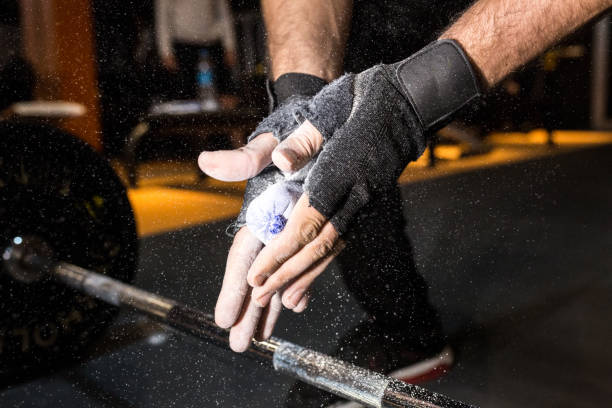
Dry Hands and Dry Surface vs Wet Hands and Dry Surface: Impact on Hook Grip Performance
Effects of Hand Moisture on Grip Stability
One thing you might need to think about when it comes to grip is how dry or moist your hands are. Maintaining a strong grip can be harder when your hands are wet. So, it’s important to keep your hands dry using chalk or a towel.
Tips for Maintaining Optimal Grip Conditions
In addition, keep your hands dry and ensure the barbell is dry. If the barbell is too slick, it can be hard to maintain a good grip. You can use a towel to dry off the barbell before your lifts.
What Tape Do Weightlifters Use? Choosing the Right Tape for Your Hook Grip
Popular Types of Tape for Weightlifting
Sometimes, it can take a lot of work to maintain a good grip on the barbell, even with the hook grip. That’s where tape comes in! Many weightlifters use tape to wrap around their fingers and thumbs to help them maintain a better grip. Athletic tape is the most popular type of tape for weightlifting, but some lifters also use specialized weightlifting tape.
How to Properly Apply Tape for Improved Hook Grip Performance
If you decide to use tape to improve your hook grip, it’s important to apply it properly. You want to wrap the tape snugly around your fingers and thumbs but not so tight that it cuts off circulation. You also want to ensure the tape doesn’t get in the way of your hook grip good enough.
Well, there you have it! Now you know all about hook grip vs regular grip and why using the hook grip can be better for your lifting. You’ll be a hook grip pro in no time with some practice!
Frequently Asked
Is hook grip better than overhand?
The added friction with the thumb makes the hook a better grip than a dual-hand grip. Because pulling movements of the hands are protracted at a hook grip, the stress is symmetrically placed on the shoulders, reducing the chance of a biceps tendon avulsion, and it can be pushed easily on the legs with fewer problems.
However, hook grip can help improve deadlifting ability in general. A solid hook grip allows more control, stability and strength in lift positions, thereby giving more deadlift results.
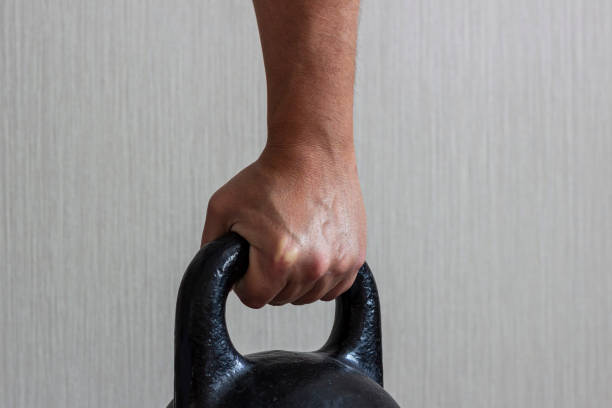
Why is hook grip easier?
The hook grip allows more excellent grip around the bar, as the fingers can wrap much wider. The Hook grip also provides a more secure grip, that ensures the bar’s roll is balanced.
Is hook grip better than normal grip?
However, hook grip can help improve deadlifting ability in general. A hook grip allows more control, stability and strength in lift positions, thereby giving more deadlift results.
Hook Grip vs Regular Grip: A Comprehensive Comparison
Key Differences Between Hook Grip and Regular Grip
So, let’s sum up what we’ve learned so far. The hook grip and the regular grip are two types of grips you can use when lifting weights. The hook grip involves wrapping your fingers around the barbell with your thumbs underneath your fingers, while the regular grip has your thumbs on the same side as your fingers.
The hook grip is better for deadlifts and other lifts that require a strong grip because it allows you to grip the bar tighter, making it less likely to slip.
Situations Where Each Grip Is Most Effective
The regular grip is still useful for lifts that don’t require as strong a a deadlift hook grip though, like a bench press. The hook grip is the way to go for lifts requiring a strong grip.


Leave a Reply